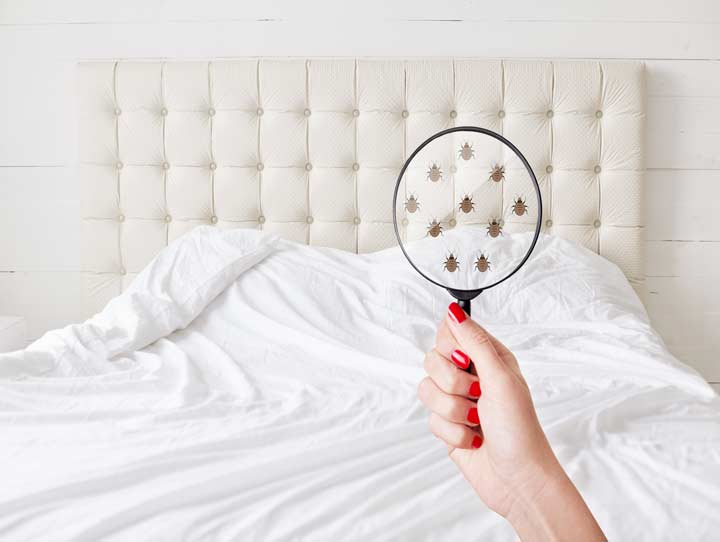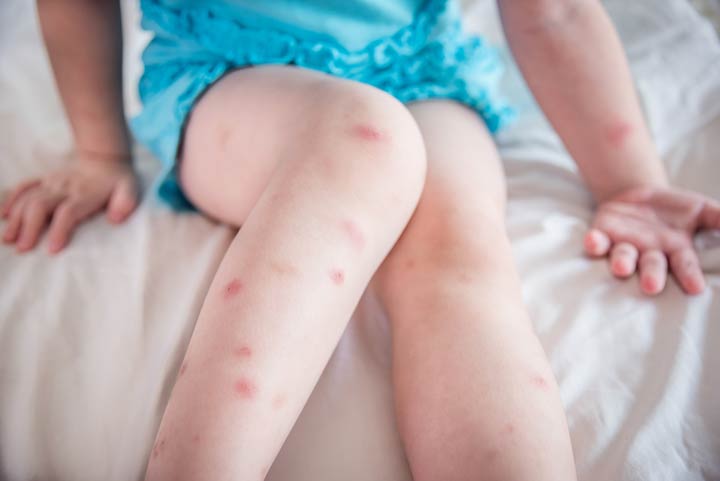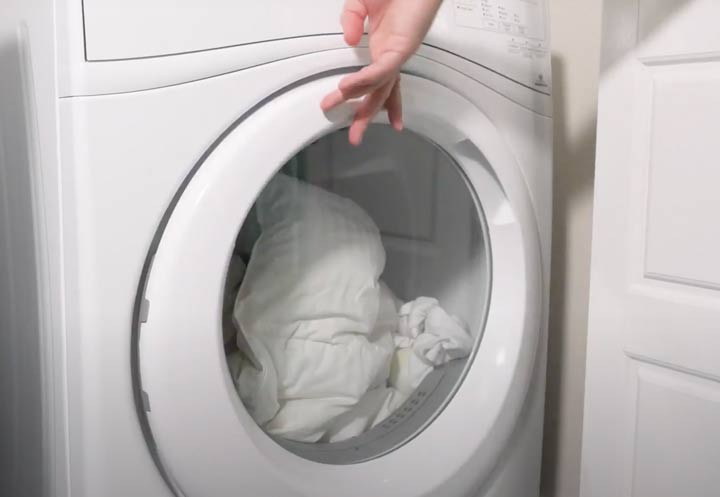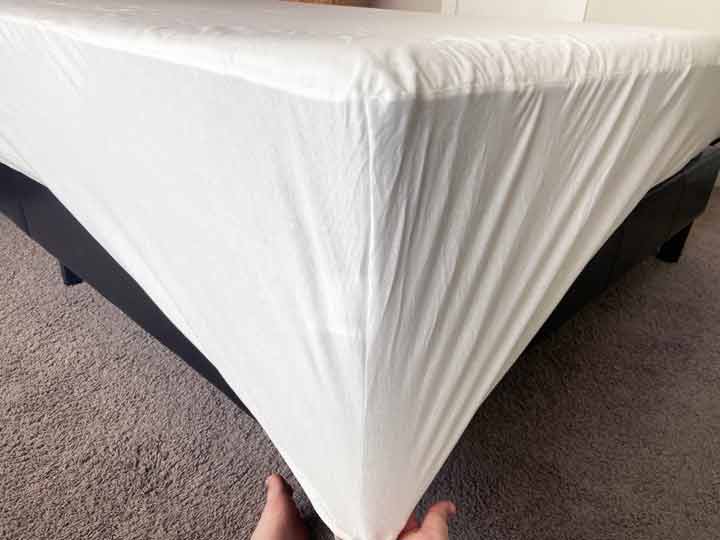It’s every traveler’s fear — arriving home only to find that some resilient insects hitched a ride.
Bed bugs (or bedbugs) are one of the most feared home invaders, so it’s important to know how to avoid bringing these six-legged biters into your home. I spoke with experts and conducted thorough research to help you learn what steps to take to avoid bed bugs in hotels on your next vacation.
Signs of Bedbugs
Here are a few ways to identify the early signs of bed bugs:
- Spots on bedding: Rust-colored spots may be bed bug blood, while black spots might be droppings.
- Eggs: Bed bug eggs look like tiny grains of rice and are often attached to bedside tables or bed frames.
- Molted skin casings: Bed bug nymphs shed pale yellow skins that you might find in the mattress seams or along the bed frame.
- Bed bugs: Bed bugs are skittish, so you aren’t likely to see them. If you do, bed bugs are small, brownish, and about the size of a lentil with the shape of an apple seed.
- Bites: Bed bug bites are itchy and red and can appear within a day or so of being bitten. Most bites occur at night. Not everyone develops an itchy welt.
- Musty Odor: Dead bedbugs often smell like dirty shoes or moldy laundry.
How to Avoid Bedbugs in Hotels
To avoid bed bug problems during travel, you must be proactive. Here’s what you should do before you travel and when you arrive at your hotel to keep bedbugs at bay.
Related: Best Hotel Mattresses
Bring a Flashlight and Plastic Card to Check for Bedbugs
Two tools are helpful if you want to check for bed bugs in your hotel room: a flashlight and a plastic card. Using a flashlight and credit or debit card can help you see clearly into the seams and crevices where bed bugs hide. You can do an okay inspection without these, but it’s easier and more accurate if you use them.
Don’t just look on the bed. These pesky insects can thrive in many places, including: couches, curtains, headboards, and pillows.

Keep Luggage and Belongings Safe
One recurring expert tip is to be incredibly careful with how you store your luggage and other belongings.
“During your hotel stay, try to keep your belongings off the floor and off the furniture,” Gulshan Hajara Banu says, a biotechnologist and the founder and CEO of Pest Keen. “Store your clothes in the plastic bags you brought and keep your luggage off the floor.”
Where is the best place to store your luggage and clothing? The bathroom. There aren’t many places where bed bugs can survive here, and there’s enough room to stay organized.
RELATED: Should You Bring Your Own Pillow When Traveling?
Keep Clothes in Plastic Bags
No matter how careful you are with your luggage, the clothing you wear around your room can become a hiding place for bed bugs.
To keep your clothes safe, Gulshan recommends, “When packing, make sure to bring a few large plastic bags, as you can use these to store your clothing before and after your stay.”
Keep your clean clothes in one plastic bag and your dirty items in a separate bag. Wash and dry your clothing at a high temperature when you get home. High temperatures will kill any bed bugs that might have hitched a ride.
Use Hard-Sided Luggage
Bed bugs hide in upholstered items with seams — a fabric suitcase, duffle bag, or backpack perfectly fits this bill. Invest in hard-sided luggage to decrease the likelihood that bed bugs will come home with you.
Check for Bed Bug Bites
If you wake up with new bites in the morning, you should consider whether or not these may be bed bug bites.
How can you tell if your bites are from bed bugs? According to a paper published in Clinical Microbiology Reviews, the bites typically occur in multiples, are red, very itchy, and often form a line. Unfortunately, even with this information, it’s hard to tell for sure what bit you.
To determine if it was potentially a bed bug, do a more thorough check of the room for signs of bed bugs. Finding the culprit is the most accurate way to know if it was a bed bug that bit you.
Talk with the hotel manager if you suspect bed bugs. Not only will they want to know so they can get rid of them, but you can move rooms and potentially receive a reimbursement.

What to Do If You Find Bed Bugs in Your Hotel
What should you do if you find evidence of bed bugs? First, quickly and calmly gather your belongings, leave the room, and ask to be moved to another room.
If you’re extra squeamish, don’t be afraid to ask for a refund and head to a different spot — perhaps an Airbnb with primarily five-star reviews.
Finally, consider changing your outfit. Be sure to put the outfit you wore into a plastic bag and dry your clothing on high heat as soon as possible.
How Common Are Bedbugs in Hotels?
According to a 2018 survey from pest control professionals, most bedbugs are found in apartments and homes, but 68% of respondents said they treated hotels for bedbugs.
“It may surprise you that bed bugs are a common problem in hotels,” says Jordan Foster, Pest Management Expert at Fantastic Pest Control. “Infestations of bed bugs have nothing to do with sanitation or cleanliness. Bed bugs are not uncommon in hotels or motels of any star rating, from one-star to five-star.”
And it doesn’t matter where you travel, either. In our article, Where The Bedbugs Bite: Mapping Reports of Bedbugs In The U.S., you can see that reports of bed bugs span the entire United States.
Because bed bugs live pretty much everywhere and can easily hop a ride on travelers, it’s important to be diligent wherever you travel. Read the most recent reviews to see if a hotel or Airbnb recently had any issues with bedbugs. You can also filter by rating and read through one-star reviews to see if anyone complains about bed bug bites.
Another resource is Bed Bug Reports, a site that allows you to look up specific hotels and see whether there are any recent reports.
How to Avoid Bringing Bedbugs Home from Vacation
Whether you discovered bed bugs or simply prefer to exercise caution, there are steps you can take to minimize the risk of introducing bed bugs into your home or apartment.
Inspect Your Clothes and Luggage
First, unpack your bags and thoroughly look for pests. It might be helpful to hold your clothes against light-colored surfaces so you can see more clearly.
Wash Your Belongings
“To prevent bringing bed bugs home, immediately put your clothing into the dryer on high for 60 minutes. This will kill any bed bugs,” says Mr. McMahan. “Then inspect the seams of your luggage, including under the liner for bed bugs. If you find bed bugs on your luggage, you can use a hand held steamer to steam the entire piece of luggage, which will kill any bed bugs.”

Vacuum
After you unpack and wash your clothing, vacuum thoroughly to suck up any potential hitchhikers. Vacuum your luggage and anywhere in your home where you had placed your luggage or unpacked your belongings.
Use a Mattress Protector
According to the Environmental Protection Agency, using a mattress cover to encase your mattress and box spring can eliminate bedbug hiding spots and help you discover an infestation sooner.
To find a high-quality mattress encasement, head over to our blog post on the Best Mattress Protectors.

How to Get Rid of Bed Bugs at Home
If you wake up with unexplained bites or find signs of bed bugs in your bed, you’ll want to act quickly. Early in an infestation, bed bugs typically stay relatively contained in and near your mattress and bedding. However, over time, these insects can move throughout your home to any upholstered surface—think curtains, carpets, couches, clothing, and more.
While there are lots of DIY tricks to repel bed bugs, these pests have a well-earned reputation for being hard to eradicate. If you have the resources, call a local pest-management professional. Not only will this step help safeguard your comfort, but it also reduces the risk that you’ll pass the infestation on to hotels you visit, your workplace, or the homes of your family and friends.
By utilizing a professional, you are more likely to salvage mattresses, furniture, and other infested items. If you decide to try to get rid of the pests yourself, you can ensure your success by sealing the items in plastic bags, transporting them to a storage unit, and leaving them there for over one year. The bed bugs and eggs should be dead by the end of the year.
In addition to contacting a pest control company, the following tips can help stem an infestation:
- Remove infested items from your home
- Use a mattress protector
- Regularly vacuum
- Dry bedding and other laundry on high heat
- Use bed bug interceptor traps at the bottom of every bed frame leg
Final Thoughts
Any hotel room can harbor bed bugs—no matter how clean or expensive. The good news? You can easily spot bed bugs before unpacking. By looking for the telltale signs of bedbugs along mattress seams and bedding — including rusty red spots, black spots, bed bugs, or molted skins — you can avoid discomfort and reduce the chances of bringing these pests home with you.
FAQs
How likely is it to get bed bugs from a hotel?
It’s not uncommon to get bedbugs from hotels, even at five-star places. Bedbugs can appear even in clean places — sometimes, it’s just bad luck.
How to prevent bringing bed bugs from a hotel?
When you return home, refrain from putting your luggage on your bed or couch. Thoroughly inspect your belongings for bugs, and wash clothes in hot water.
How do you make sure there are no bed bugs in a hotel room?
Check the bed and nightstands for signs of bed bugs, such as rust-colored spots, eggs, and molted skin casings. If you come across any of these things, call the front desk and ask to be moved to another room.
Can you see bedbugs with the naked eye?
Yes, you can see adult bedbugs with the naked eye. They are reddish brown and small in size, about the length and width of an apple seed.
What is the main cause of bedbugs?
Bedbugs travel from place to place. If a hotel has bedbugs, it likely came from another guests’ luggage or clothing.


